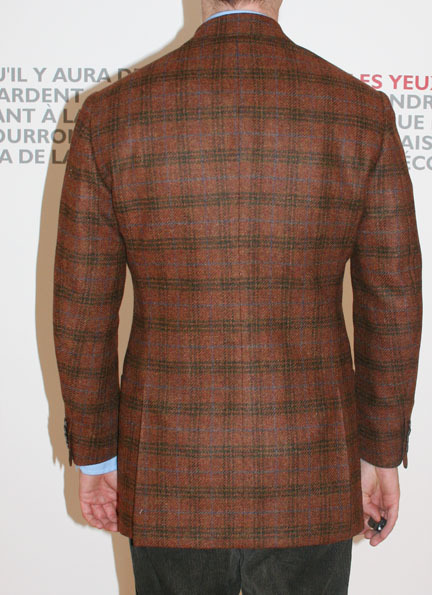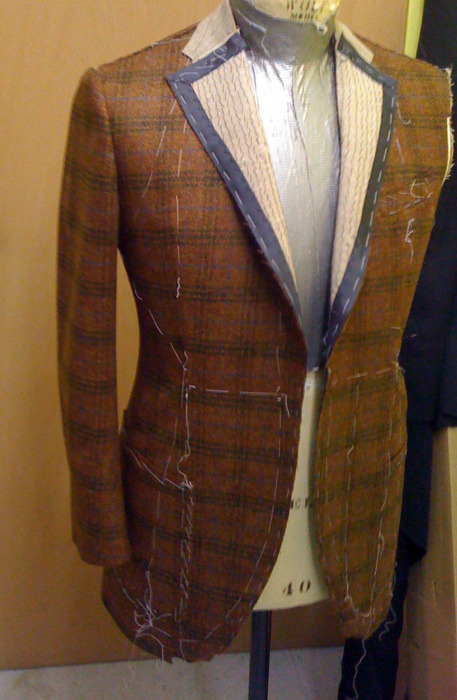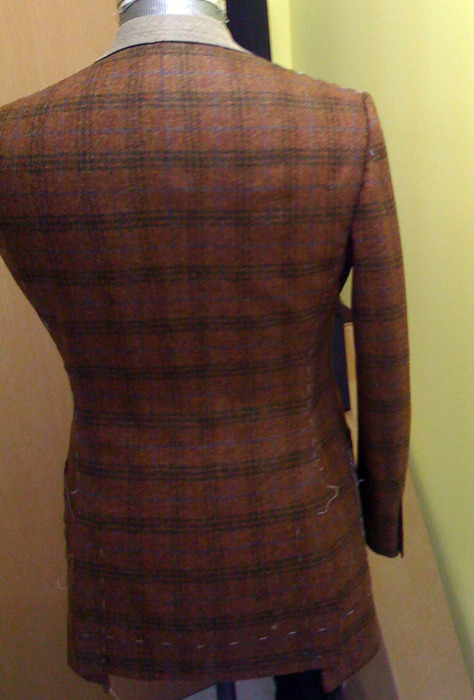I remember the first time I saw a draped jacket. It was like seeing a suit for the first time. I was in San Francisco, and the man I saw, I’m pretty sure, only wore custom Neapolitan garments, except for his shoes, which were English. On that day, he was wearing a navy wool flannel, pinstripe suit; a crisp, white, spread collar shirt; and a deep brown, pin dotted tie, which was knotted in this rakish, slightly askew way. He seemed to me like the most elegant man I’d ever seen.
Most people hate draped jackets. For them, it looks like bad, messy tailoring. I was ambivalent about the silhouette until I saw one in real life, and now I’m a die-hard convert. To review, the drape cut was invented by a Dutch-English tailor named Frederick Scholte. He would cut the pattern such that large vertical folds of excess cloth would gather around the armhole. Sometime in the mid-20th century, copycat tailors made this look quite exaggerated, but well executed versions are fairly subtle. Additionally, the appearance of drape often comes accompanied with a swelled chest. The two don’t always go together, but they often do. A swelled chest is when … well … the chest swells. I’ve circled the drape and underlined the swells on the jacket below.
Having seen a draped jacket with a swelled chest in real life, I realized how stunning this cut can be. The chest appears sculpted in a way that makes the wearer look masculine, muscular, and comfortably relaxed. At least on the man that I saw, his swelled, draped chest gave him a slightly Olympian look. The skirt was also cut tight, which made his hips look columnar. Coupled with his slim trousers, the effect was quite stunning and handsome. This kind of cut would be contrasted against clean chested suits, which lack the excessive cloth and sit much closer to the wearer’s body. That specie of suit can certainly be handsome as well (most suits are clean chested), but I really appreciate the expressiveness of draped jackets.
Jeffrey Diduch, a tailor who runs a rather informative blog on bespoke tailoring, strongly prefers clean chested suits to draped jackets. However, for the sake of experimentation and honest judgment, he cut a draped jacket from Whife’s draft. Whife was one of the most famous cutters of the 20th century, and the editor of Modern Tailor, Outfitter and Clothier, a massive 3-volume encyclopedia of tailoring that has become somewhat of a collector’s item. The result is below. Mind you, this was cut by a man who prefers a clean-cut chest to drape, and the result below is his first attempt … for himself. Though I’m not a tailor, I imagine tailoring a jacket for yourself is much harder than doing it for someone else. The button stance on the brown jacket could be higher (he was following Whife’s early 20th century pattern), but the coat is still striking. The final product is more of a testament of Diduch’s incredible skill than the drape pattern, but with results this stunning, imagine what I saw in real life.





